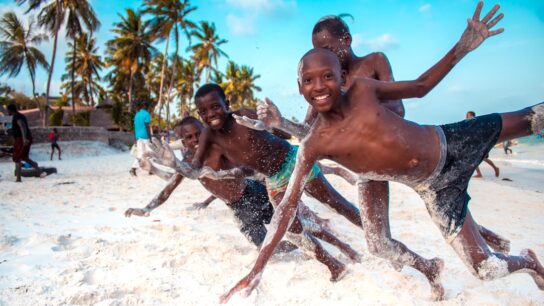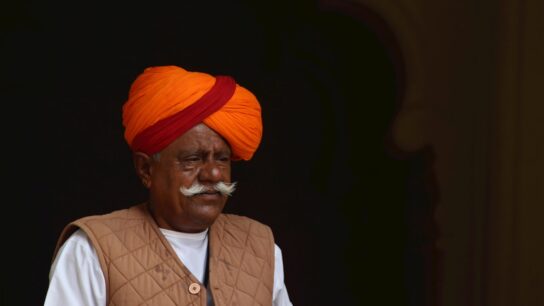In October 2006, a tragic accident claimed the life of 18-year-old Nikki Catsouras. The young woman lost control of her father’s Porsche 911 and crashed into a toll booth in California. The accident was devastating for Nikki’s family and friends, but what followed was equally distressing. Graphic photos of the accident scene were leaked and spread online, causing immense pain and trauma for Nikki’s loved ones. This article will explore the release of these photos, the outrage and backlash that ensued, the legal battle over their ownership and distribution, and the lasting impact on Nikki’s family and friends.
Key Takeaways
- Nikki Catsouras tragically lost her life in a car accident at a young age.
- Graphic photos of Nikki’s death were released online without her family’s consent.
- The public expressed outrage and backlash against the publication of the photos.
- A legal battle ensued over the ownership and distribution of the graphic images.
- The incident had a profound impact on Nikki’s family and friends, causing immense grief and trauma.
The Release of Nikki Catsouras’ Graphic Death Photos
Shortly after the accident, photos of Nikki’s mangled body at the crash scene began circulating online. It is believed that a California Highway Patrol officer leaked the photos to friends, who then shared them on various websites and forums. The graphic nature of the images was shocking and disturbing, showing Nikki’s lifeless body with severe injuries.
The photos quickly went viral, spreading across the internet like wildfire. They were shared on social media platforms, emailed to friends, and even used as macabre wallpapers on computers. The ease with which these images could be accessed and shared amplified their reach and impact.
The Outrage and Backlash Against the Photos’ Publication
Nikki’s family and friends were devastated by the release of these graphic photos. They were forced to relive the trauma of her death every time they encountered these images online. Her parents, Christos and Lesli Catsouras, were particularly vocal in their outrage. They spoke out against the publication of the photos, describing them as an invasion of their daughter’s privacy and a violation of their family’s grief.
The public also expressed their outrage at the publication of these photos. Online petitions were created to demand their removal from websites, with thousands of signatures gathered in support. People were appalled by the lack of empathy and respect shown towards Nikki and her family.
The Legal Battle Over the Photos’ Ownership and Distribution
Nikki’s family filed multiple lawsuits in an attempt to hold those responsible for the release and dissemination of the photos accountable. They sued the California Highway Patrol for negligence in allowing the photos to be leaked, as well as individuals who shared the images online.
The legal battle was long and arduous. The Catsouras family argued that the photos were private property and should not have been released without their consent. They also claimed that the graphic nature of the images caused severe emotional distress.
Ultimately, the court ruled in favor of the Catsouras family, stating that the photos were indeed private property and should not have been released without consent. The court awarded them a settlement, but it could never undo the damage that had been done.
The Impact on Nikki Catsouras’ Family and Friends
The release of Nikki’s graphic death photos had a profound and lasting impact on her family and friends. They were forced to confront their grief in a public and traumatic way, with images of Nikki’s lifeless body constantly circulating online.
The emotional toll was immense. Nikki’s parents struggled with feelings of guilt, wondering if they could have done anything to prevent the accident or protect their daughter’s privacy after her death. Her siblings faced bullying and harassment at school as a result of the photos being shared.
The ongoing trauma and grief for Nikki’s loved ones cannot be overstated. They continue to grapple with the pain of losing her, compounded by the knowledge that her death has been sensationalized and exploited for public consumption.
The Ethics of Publishing Graphic Images of Fatal Accidents

The release and publication of Nikki Catsouras’ graphic death photos sparked a heated debate about the ethics of sharing such content. On one hand, there is an argument for the public’s right to know and the importance of raising awareness about the consequences of reckless driving. On the other hand, there is a strong case for respecting the privacy and dignity of victims and their families.
Media outlets and individuals who shared the photos were criticized for their lack of empathy and sensitivity. Many argued that the graphic nature of the images served no purpose other than to shock and traumatize viewers. They questioned whether it was necessary to show such explicit content in order to convey the message about the dangers of reckless driving.
The Psychological Effects of Viewing Traumatic Images Online
The impact of viewing traumatic images online should not be underestimated. For those who come across graphic content without warning, it can trigger feelings of anxiety, depression, and post-traumatic stress disorder (PTSD). This is especially true for individuals who have experienced similar traumas in their own lives.
The need for trigger warnings and resources for those affected by trauma is crucial. Websites and social media platforms should take responsibility for providing warnings and support for users who may be vulnerable to the psychological effects of viewing traumatic images.
The Role of Social Media in Spreading and Amplifying Controversial Content
Social media platforms played a significant role in the spread and amplification of Nikki Catsouras’ graphic death photos. The ease with which these images could be shared on platforms like Facebook, Twitter, and Instagram allowed them to reach a wide audience within seconds.
The responsibility of social media platforms in regulating and removing harmful content has been a topic of debate. While some argue that platforms should take a more active role in monitoring and removing graphic content, others believe that it is ultimately up to individuals to exercise discretion and empathy when sharing such material.
The Need for Better Laws and Regulations Around Graphic Content Online
Nikki Catsouras’ case highlighted the lack of clear laws and regulations around graphic content online. While there are laws in place to protect individuals from revenge porn and child exploitation, there is a gap when it comes to graphic images of fatal accidents.
There is a need for stronger measures to protect victims and their families from the exploitation and sensationalization of their tragedies. This includes clearer laws around the ownership and distribution of graphic content, as well as stricter penalties for those who violate these laws.
The Importance of Respecting the Dignity and Privacy of Victims and Their Families
Above all, Nikki Catsouras’ case serves as a reminder of the importance of respecting the dignity and privacy of victims and their families, even in death. The pain and trauma experienced by those left behind should not be compounded by the public dissemination of graphic images.
Empathy and compassion should guide our actions when it comes to sharing sensitive content. We must consider the potential harm that can be caused by sharing graphic images and prioritize the well-being of those affected.
The release and publication of Nikki Catsouras’ graphic death photos had a profound impact on her family and friends, sparking a larger debate about the ethics of sharing such content online. It highlighted the need for better laws and regulations around graphic content, as well as the responsibility of individuals to exercise empathy and discretion.
Moving forward, it is crucial that we prioritize the dignity and privacy of victims and their families. We must advocate for stronger measures to protect them from exploitation and ensure that their grief is not further compounded by the public dissemination of graphic images. It is only through empathy and compassion that we can create a safer online environment for all.
If you’re interested in exploring the impact of graphic content on mental health, you might find this article from Calm Telehealth insightful. It delves into the controversial case of Nikki Catsouras and the aftermath of her tragic death photographs being circulated online. The article discusses the potential psychological consequences of exposure to such graphic imagery and raises important questions about responsible content sharing. To read more about this thought-provoking topic, click here.
FAQs
What are the Nikki Catsouras death photographs?
The Nikki Catsouras death photographs are a series of graphic images that were taken after the death of Nikki Catsouras, a young woman who died in a car accident in 2006.
How did the Nikki Catsouras death photographs become public?
The Nikki Catsouras death photographs were leaked by California Highway Patrol officers who had access to the images. The photographs were then circulated on the internet and became widely available.
What was the reaction to the Nikki Catsouras death photographs?
The Nikki Catsouras death photographs sparked widespread outrage and controversy. Many people were upset that the photographs were leaked and circulated on the internet, and some even called for legal action against those responsible.
What is the legal status of the Nikki Catsouras death photographs?
The Nikki Catsouras death photographs are considered to be public domain, meaning that they are not protected by copyright and can be freely distributed. However, some websites and social media platforms have policies against sharing graphic or disturbing content.
What impact did the Nikki Catsouras death photographs have on the Catsouras family?
The Nikki Catsouras death photographs had a profound impact on the Catsouras family, who were devastated by the loss of their daughter and the subsequent circulation of the graphic images. The family has since become advocates for stricter laws around the sharing of graphic content online.



